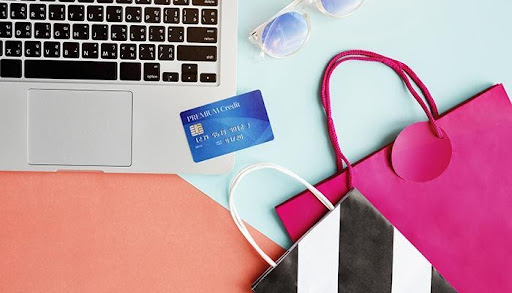Credit balance or credit card is a familiar concept in the field of credit loans, often mentioned when making loan documents. So what exactly is this and how does it affect the loan procedure? Find out right through the following article:
Table of Contents
What is a credit card balance?
Credit cards are gradually becoming a familiar product for many young and middle-aged people today. When making a card, the bank staff will remind the card maker about the “credit card balance”. So what is card balance?
Credit card balance is the amount that the cardholder owes the bank for using the card to pay or withdraw cash. Basically, a credit card is a card that helps you pay first and pay later. That is, the issuing bank will grant an amount of the card’s limit to customers to use first and must return it on the payment due date each month. Therefore, the conclusion is that the total amount spent by card, interest rate and fees (if any) is the credit card balance that the cardholder must pay to the bank.
Credit card balance has how many groups?
For each debt level, customers will be divided into different debt groups:
Standard balance, i.e. Group 1:
For this group of debts, the cases included in the group will include debts that are assessed to be able to recover both principal and interest on time, debts that have just come due or are only overdue for less than 10 years. day
Outstanding balance needs attention, ie Group 2:
This group is the subjects whose debts are overdue from 10 days to less than 30 days. Many banks and credit units still consider this group of debts to be able to pay in full, including penalty fees.
Sub-standard loans, ie group 3:
Customers who are 30 to less than 90 days late are classified in this group. Debts can be supported free or reduced interest because customers are not able to pay interest in full according to the original commitment.
Doubtful balance, ie group 4:
As customers who are 90 to 180 days late in their debt, there is a high probability that the debt will not be repaid.
Outstanding loans at risk of capital loss, ie group 5:
Includes debts that are overdue for 180 days or more, with a very high probability of being unable to repay.
Quick ways to pay off your credit card balance
To avoid being charged a penalty fee as well as many other debt reminders and fee reminders from the bank, keep in mind the monthly credit card payment date. You can easily pay your credit balance through channels such as:
- Deposit cash at the bank
You can bring cash to transaction points/branches affiliated to your credit card issuing bank, ask the teller for assistance to proceed with payment of outstanding balance.
- Sign a check or order
Through your signed check or money order, the customer can pay the total outstanding balance for the credit card issued by the bank.
- Automatic debit
To pay by automatic debit, cardholders need to register for this service at the bank. You can then choose one of two methods to pay part or all of your outstanding balance.
- Transfers
The transfer at the counter, ATM or through internet banking and mobile banking applications, sms banking will help users quickly pay the outstanding balance.
OnCredit supports vay online 24/7 consultation for customers in need. Visit the website or download the application to register a profile and get money transferred within 5 minutes.

Notes when using credit cards – credit cards
The risks when using credit cards always exist and if they really happen, they will adversely affect card users. To avoid unnecessary risks, customers should carefully evaluate whether they should use the card or not. In particular, pay attention to how much your current outstanding balance is, when to pay. In addition, customers should refer to some other issues related to credit cards such as:
– Regularly keep your card information secure, it is best to change your password every 1-3 months to limit online card payments at computers or public devices.
– Customers should carefully identify the promotional information of the supporting bank for their credit card.
– Refer to details about fees to be paid such as annual fee, transaction management fee, cash advance fee, …
– Special: do not use credit card to withdraw cash.
– Most importantly: Pay your credit card balance on time.
Credit card or credit card is a cashless payment method with many practical benefits for users. However, using your card incorrectly can turn you into a “debtor” to the bank, especially if you don’t pay on time. Therefore, cardholders need to understand the rules, usage, fee schedule as well as the card’s promotions and promotions in order to minimize unwanted occurrences.

